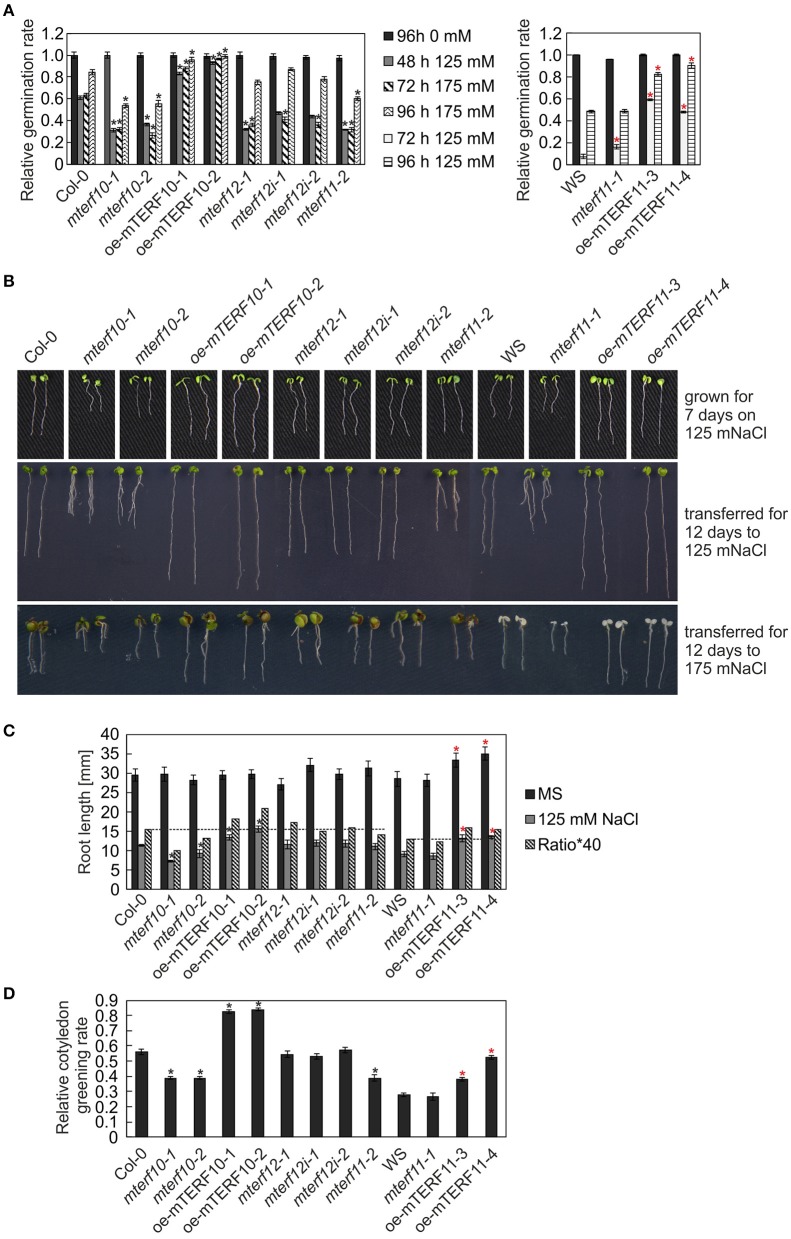Figure 7.
Responses of WT seedlings (WS for mterf11-1 and oe-mTERF11 lines, and Col-0 for the remaining mutant lines), T-DNA (mterf10-1 and -2, mterf11-1 and -2, and mterf12-1), RNAi (mterf12i-1 and -2) and overexpression lines (oe-mTERF10 and oe-mTERF11) to salt stress treatment under long-day conditions. (A) Seed germination was investigated on MS medium in the absence and presence of 125 and 175 mM NaCl. Radicle emergence was scored after indicated time points. Germination rates were calculated relative to the number of total seeds. (B) Phenotypes of 7-day-old WT and mutant seedlings were germinated on either MS medium supplemented with 125 mM NaCl (grown for 7 days on 125 mM NaCl), or on MS medium and transferred directly after radicle emergence for 12 days to MS medium supplemented with 125 mM NaCl (transferred for 12 days to 125 mM Nacl) or 175 mM NaCl (transferred for 12 days to 175 mM NaCl), respectively. The root lengths (C) and cotyledon greening rates of seedlings grown on 125 mM NaCl—displayed as the ratio of the number of green cotyledons to the total number of cotyledons (D) were determined after 7 and 5 days, respectively. The data in (A,C,D) represent mean values ± SD of three independent experiments, each performed with at least 100 seeds per treatment and genotype. Statistically significant differences (t-test; p < 0.05) between WT (Col-0 or WS) and corresponding mutant lines are indicated by an asterisk (black for Col-0; red for WS).

